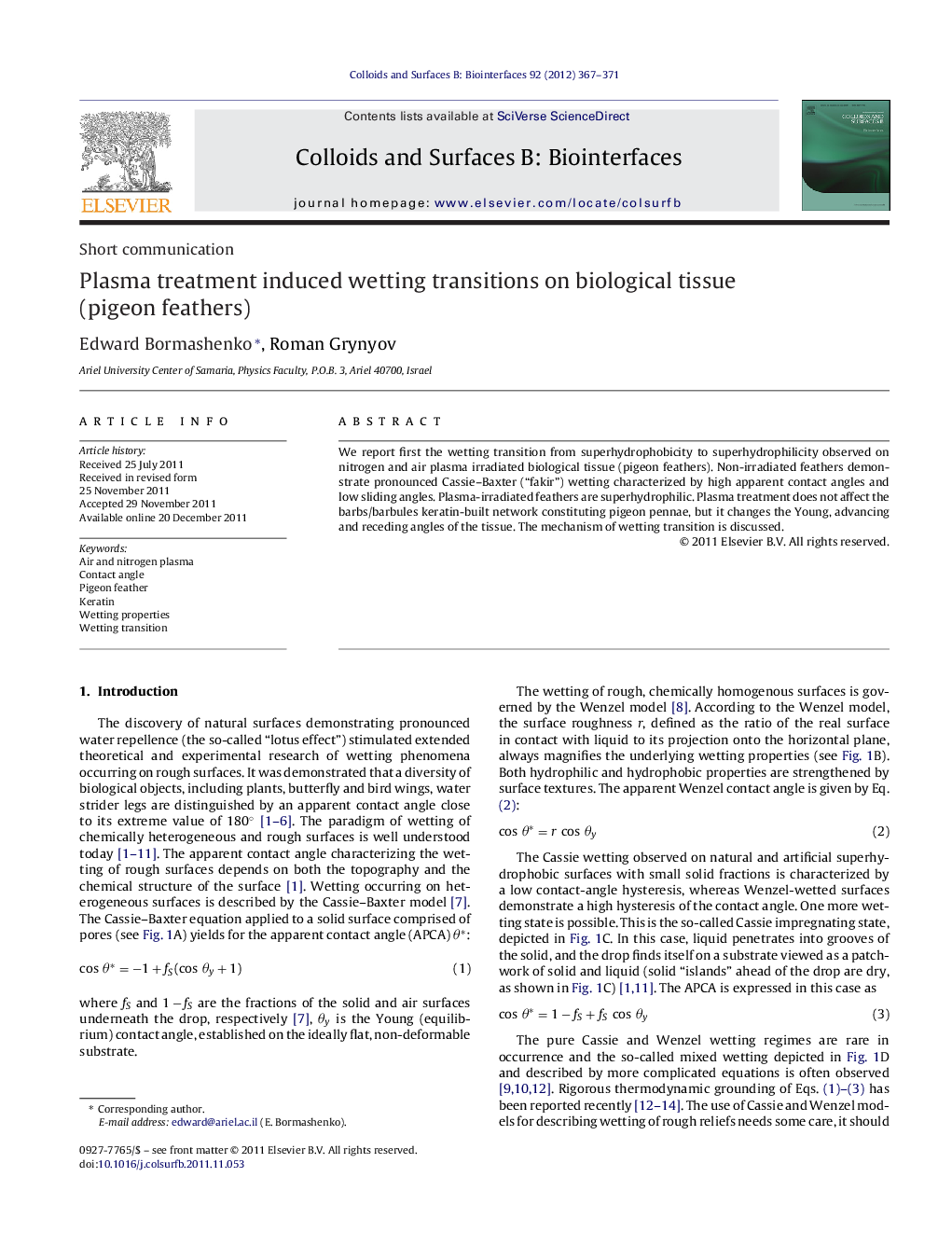| Article ID | Journal | Published Year | Pages | File Type |
|---|---|---|---|---|
| 600681 | Colloids and Surfaces B: Biointerfaces | 2012 | 5 Pages |
We report first the wetting transition from superhydrophobicity to superhydrophilicity observed on nitrogen and air plasma irradiated biological tissue (pigeon feathers). Non-irradiated feathers demonstrate pronounced Cassie–Baxter (“fakir”) wetting characterized by high apparent contact angles and low sliding angles. Plasma-irradiated feathers are superhydrophilic. Plasma treatment does not affect the barbs/barbules keratin-built network constituting pigeon pennae, but it changes the Young, advancing and receding angles of the tissue. The mechanism of wetting transition is discussed.
Graphical abstractFigure optionsDownload full-size imageDownload as PowerPoint slideHighlights► Pigeons pennae demonstrate the pronounced Cassie wetting. ► Wetting of keratin-built pigeon feathers changed dramatically when irradiated by air and nitrogen plasma. ► Plasma treatment did not affect the barbs/barbules network but it changed the Young angle of the tissue. ► The wetting transition is irreversible.
